Related Research Articles

Mycology is the branch of biology concerned with the study of fungi, including their taxonomy, genetics, biochemical properties, and use by humans. Fungi can be a source of tinder, food, traditional medicine, as well as entheogens, poison, and infection. Mycology branches into the field of phytopathology, the study of plant diseases. The two disciplines are closely related, because the vast majority of plant pathogens are fungi. A biologist specializing in mycology is called a mycologist.
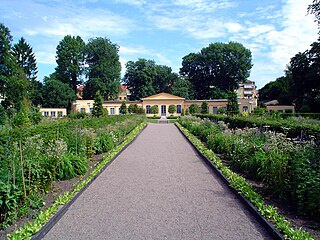
The International Code of Nomenclature for algae, fungi, and plants is the set of rules and recommendations dealing with the formal botanical names that are given to plants, fungi and a few other groups of organisms, all those "traditionally treated as algae, fungi, or plants". It was formerly called the International Code of Botanical Nomenclature (ICBN); the name was changed at the International Botanical Congress in Melbourne in July 2011 as part of the Melbourne Code which replaced the Vienna Code of 2005.
In mycology, the terms teleomorph, anamorph, and holomorph apply to portions of the life cycles of fungi in the phyla Ascomycota and Basidiomycota:

The Fungi of Australia form an enormous and phenomenally diverse group, a huge range of freshwater, marine and terrestrial habitats with many ecological roles, for example as saprobes, parasites and mutualistic symbionts of algae, animals and plants, and as agents of biodeterioration. Where plants produce, and animals consume, the fungi recycle, and as such they ensure the sustainability of ecosystems.

The British Mycological Society is a learned society established in 1896 to promote the study of fungi.
MycoBank is an online database, documenting new mycological names and combinations, eventually combined with descriptions and illustrations. It is run by the Westerdijk Fungal Biodiversity Institute in Utrecht.

Dikarya is a subkingdom of Fungi that includes the divisions Ascomycota and Basidiomycota, both of which in general produce dikaryons, may be filamentous or unicellular, but are always without flagella. The Dikarya are most of the so-called "higher fungi", but also include many anamorphic species that would have been classified as molds in historical literature. Phylogenetically the two divisions regularly group together. In a 1998 publication, Thomas Cavalier-Smith referred to this group as the Neomycota.
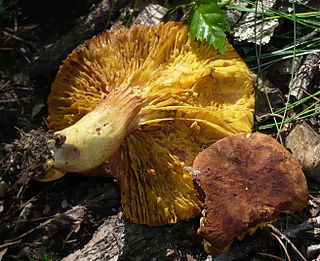
Phylloporus pelletieri, commonly known as the golden-gilled bolete, is a species of fungus in the family Boletaceae.
David Leslie Hawksworth is a British mycologist and lichenologist currently with a professorship in the Universidad Complutense de Madrid in Madrid, Spain and also a Scientific Associate of The Natural History Museum in London. In 2002, he was honoured with an Acharius Medal by the International Association for Lichenology. He married Patricia Wiltshire, a leading forensic ecologist and palynologist in 2009. As of 2022, he is the Editor-in-Chief of the journals IMA Fungus and Biodiversity and Conservation.

Waxcap grassland is short-sward, nutrient-poor grassland that supports a rich assemblage of larger fungi, particularly waxcaps, characteristic of such habitats. Waxcap grasslands occur principally in Europe, where they are declining as a result of agricultural practices. The fungal species are consequently of conservation concern and efforts have been made in the United Kingdom and elsewhere to protect both the grasslands and their characteristic fungi. Over 20 species of European waxcap grassland fungi are assessed as globally "vulnerable" or "endangered" on the IUCN Red List of threatened species.
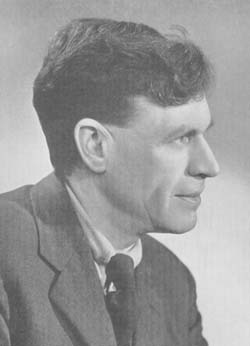
Cecil Terence Ingold CMG was "one of the most influential mycologists of the twentieth century". He was president of the British Mycological Society where he organised the first international congress of mycologists. An entire class of aquatic fungi within the Pleosporales, the Ingoldian fungi, were named after him, although recent DNA studies are changing the scientific names.
The International Mycological Association (IMA) is a professional organization that promotes mycology, the study of fungi. It was founded in 1971 during the first International Mycological Congress, which was held in Exeter (UK).
Roy Watling, PhD., DSc, FRSE, F.I.Biol., C.Biol., FLS is a Scottish mycologist who has made significant contributions to the study of fungi both in the identification of new species and correct taxonomic placement, as well as in fungal ecology.
Franz Oberwinkler was a German mycologist, specialising in the fungal morphology, ecology and phylogeny of basidiomycetes.
John Webster was an internationally renowned mycologist and head of biological sciences at the University of Exeter in England. He also served twice as president of the British Mycological Society. He is recognised for determining the physiological mechanism underpinning fungal spore release, though is probably best known by students of mycology for his influential textbook, Introduction to Fungi.
Pedro Willem Crous is a South African mycologist and plant pathologist.
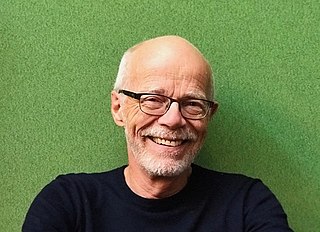
John Waldo Taylor is an American scientist who researches fungal evolution and ecology. He is professor of the graduate school in the Department of Plant and Microbial Biology at the University of California, Berkeley.
Stanley John Hughes (1918–2019) was a Canadian scientist who is known throughout the global field of mycology for developing and introducing a precise and meticulous system for classifying fungi that is still used today. A naturalized Canadian, he was a federal research scientist for Agriculture and Agri-Food Canada at what is today the Ottawa Research and Development Centre.
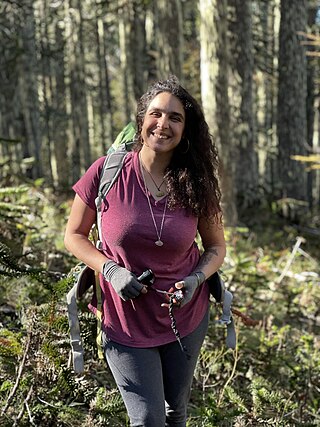
Giuliana Furci OSI is a field mycologist, speaker, author, and founder and CEO of the Fungi Foundation. She is a Harvard University associate, National Geographic Explorer, Dame of the Order of the Star of Italy, deputy chair of the IUCN Fungal Conservation Committee, and author of several titles including a series of field guides to Chilean fungi and co-author of titles such as the 1st State of the World's Fungi and the publication delimiting the term “funga” and the 3F Proposal - Fauna, Flora & Funga. Giuliana has held consulting positions in U.S. philanthropic foundations as well as full-time positions in international and Chilean marine conservation non-profits. She sits on the Board of Fundación Acción Fauna, and on the advisory board of the Society for the Protection of Underground Networks (SPUN), and other organizations. Giuliana has received several distinctions including the 2022 Buffett/National Geographic Leadership in Conservation in Latin America Award, 2022 Gordon and Tina Wasson Award from the Mycological Society of America, and the 2013 Presidents Award from the International Society for Fungal Conservation.
Amy Yarnell Rossman is an American mycologist and a leading expert in identifying fungi.
References
- ↑ "European Mycological Association | UIA Yearbook Profile | Union of International Associations". uia.org. Retrieved 2023-10-02.
- 1 2 3 "European Mycological Association". www.euromould.org. Retrieved 2023-10-01.
- ↑ "David Minter's additional report on the establishment of the European Mycological Association | International Mycological Association". www.ima-mycology.org. Retrieved 2023-10-02.
- ↑ "European Mycological Association: origin of the EMA". www.euromould.org. Retrieved 2023-10-01.
- ↑ "18th Congress of European Mycologists". xviiicem.syskonf.pl. Retrieved 2024-02-06.
- ↑ Longatti. "ECCF-Activities". www.eccf.eu. Retrieved 2024-02-06.
- ↑ "International Society for Fungal Conservation: about the Society". www.fungal-conservation.org. Retrieved 2024-02-06.
In August 1985, at the IX Congress of European Mycologists in Oslo, in response to far-sighted proposals, the European Council for Conservation of Fungi [ECCF] was formed. That council, the world's oldest entity devoted to fungal conservation is now the conservation wing of the European Mycological Association.
- ↑ "Protection of fungi in Europe and worldwide - Swissfungi". swissfungi.wsl.ch. Retrieved 2023-10-02.
- 1 2 Simmons, Emmory G (June 2010). "The International Mycological Association: its history in brief with summaries of its International Mycological Congresses and diverse international relationships". IMA Fungus. 1 (1): 85. doi:10.5598/imafungus.2010.01.01.01. PMC 3344280 . PMID 22679567.
Eventually a formal European Mycological Association took over the functions of the Congress of European Mycologists, and its new Constitution became effective. The Governing Committee of the EMA serves as the Committee for Fungi in Europe within the International Mycological Association.
- ↑ "Memorandum by the European Mycological Association". Parliament UK. Select Committee on Science and Technology. 4 February 2008. Retrieved 2 October 2023.